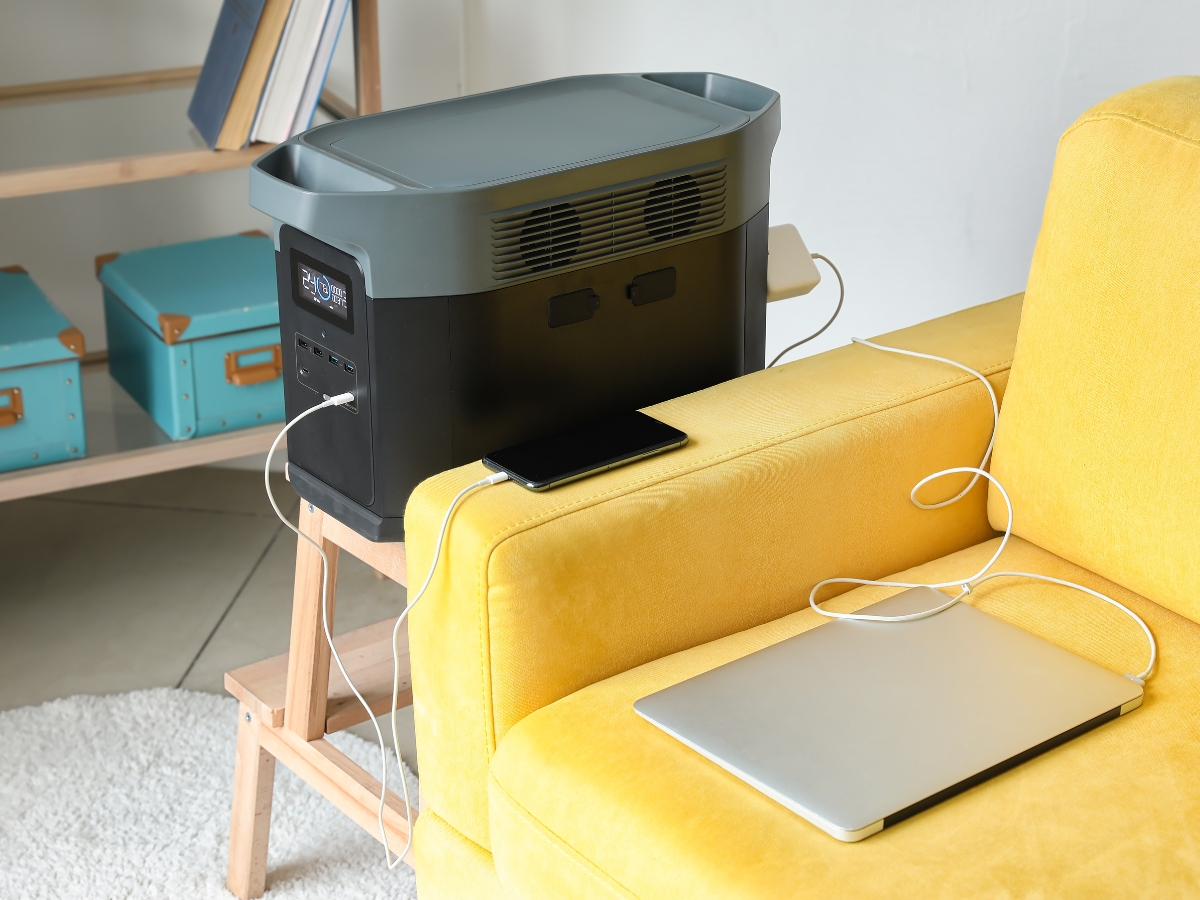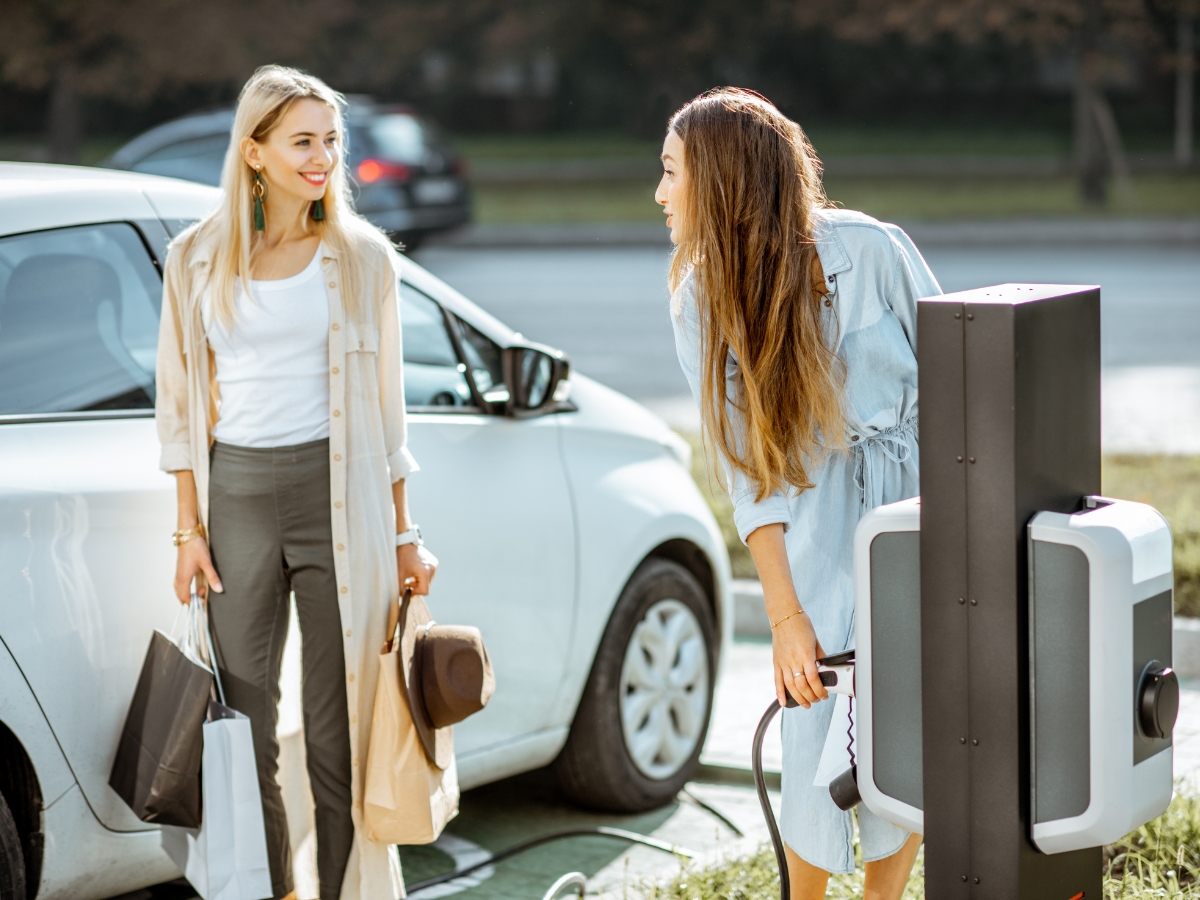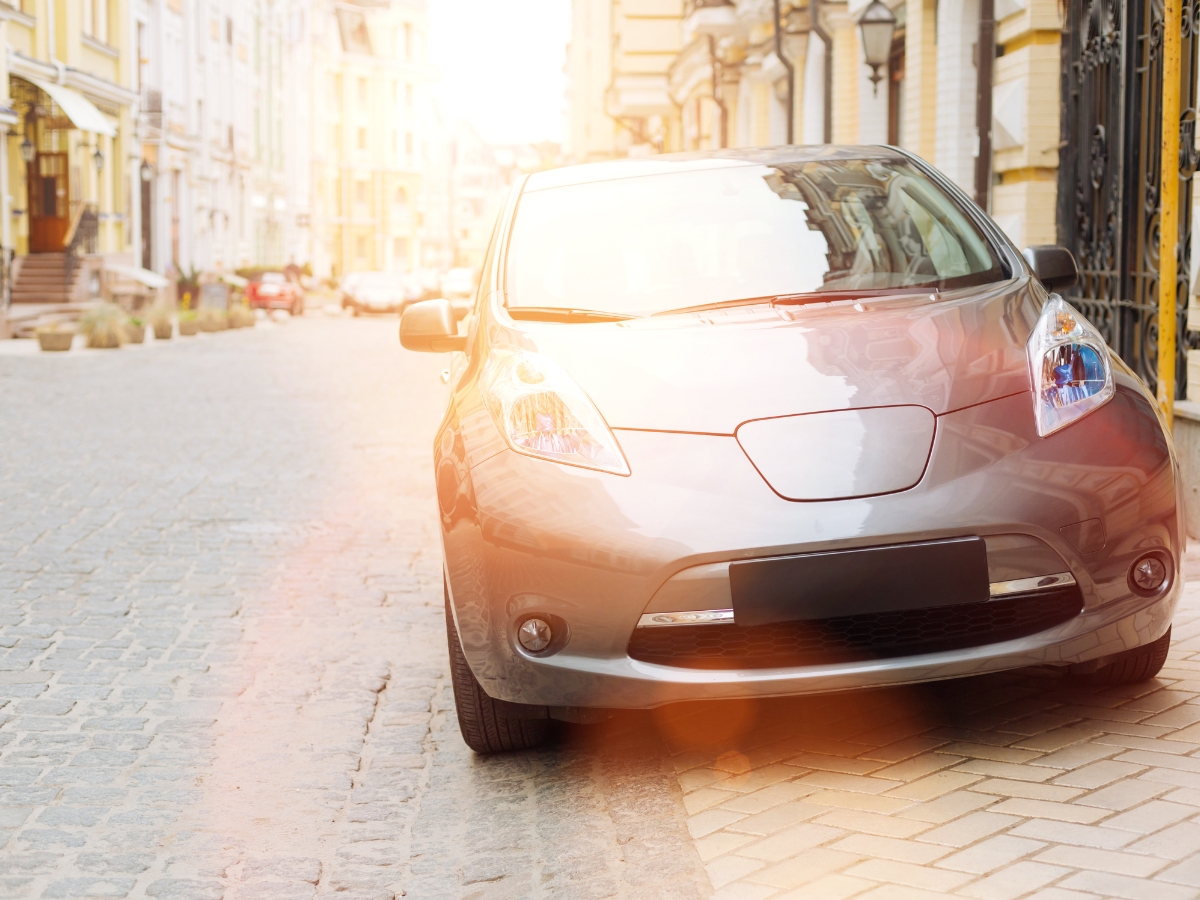A functioning propane regulator will ensure that only the right amounts of propane are sent to your generator. By modifying the gas from the gas tank, a propane regulator for the standby generator improves safety and efficiency when you use the gas.
In this article, we will discuss
- Regulator size
- High- and low-pressure regulators
- 2-state regulators
- and more.
Keep reading to learn the answers to your questions about propane regulators.
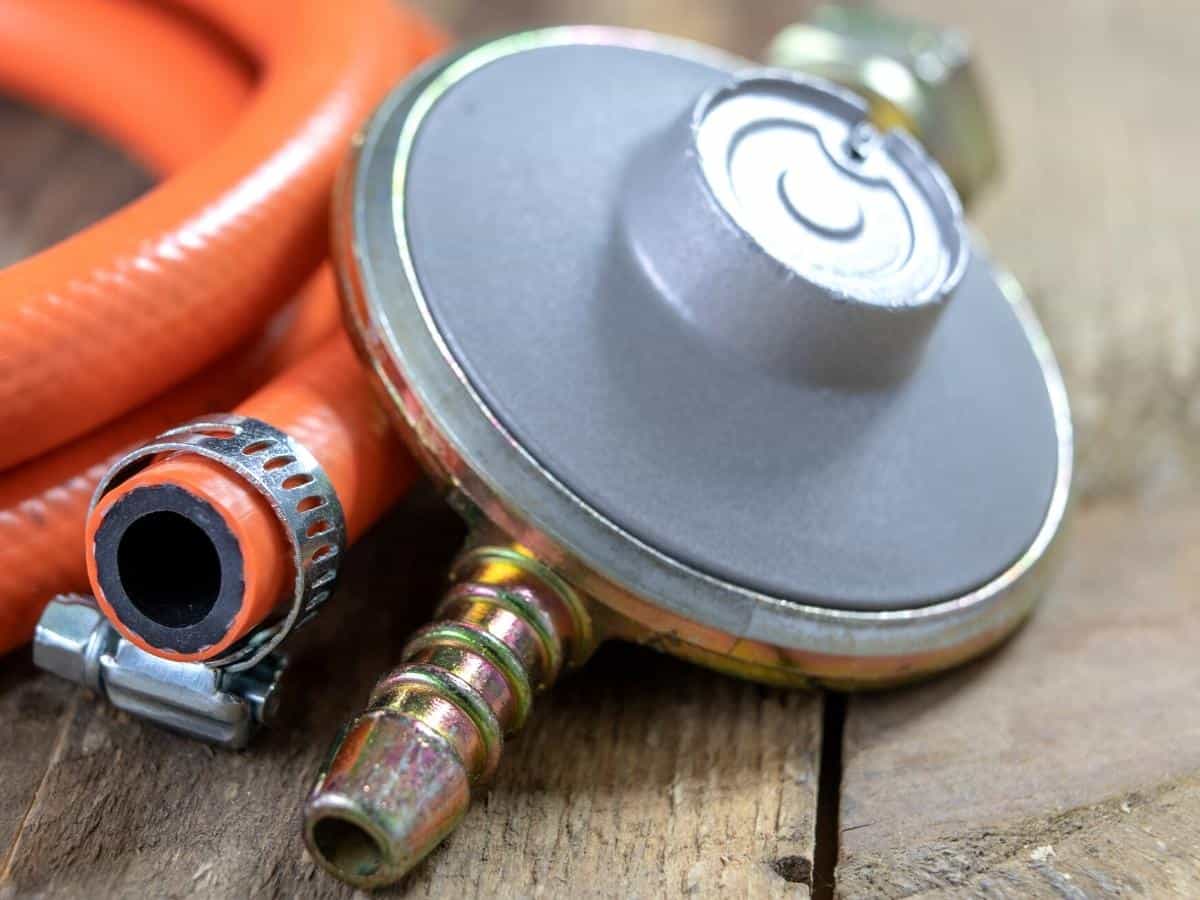
2 Stage Propane Regulator for Generator
2-stage regulators help ensure that the appliances such as stoves and ovens receive the appropriate propane pressure. The first stage regulator reduces tank pressure to approximately 10psi. The second stage regulator slashes this even further (to around 4psi).
Do you Two-Stage Propane Regulator?
You can use a single-stage regulator if your tank is in constant use and you don’t have more than 10 feet of a line running from the tank to your appliance.
But even then, you risk having your tank freeze if you have any leaks or your appliance malfunctions. Thus, you will probably need a two-stage propane regulator in the end.
- Has integral first and second stages that ensure smoother, more consistent flow of propane gas to all RV appliances
- Inlet: 0. 25-Inch Female NPT Outlet: 0. 38-Inch Female NPT
- Outlet pressure: 11-Inch WC
Propane Regulator Sizing Chart
When sizing a propane regulator, most people start calculating their total consumption rate. It would help if you converted it from gallons per hour (GPH) to pounds per hour (PPH).
Use the manufacturer-provided sizing chart to determine which regulator you need based on your PPH consumption rate.
What Kind of Propane Regulator Do I Need for a Generator?
There are three major regulators: high-pressure, first stage, and second stage.
- Use high-pressure regulators for large propane tanks with 500 gallons or more capacity.
- Buy a first-stage regulator for small tanks with capacities between 20 and 100 gallons.
- Second-stage regulators are ideal for smaller tanks with less than 20 gallons of capacity.
How To Size a Propane Regulator
Below is a step-by-step guide for sizing your propane regulator:
Step 1: Calculate the BTU of Your Unit
To size a propane regulator, you first need to calculate the BTU usage of your unit. You can do this by multiplying each device’s total BTU usage by the number of hours each device will be in use per day.
The sum of all these multiplications equals the total BTU usage of your system.
Step 2: Determine the minimum inlet pressure required
Once you know how many BTUs your system requires, check device specifications to determine the minimum required inlet pressure. For most propane devices, this is typically between 11″ water column and 14″ water column (0.5 PSI and .6 PSI).
Step 3: Look up the cubic feet per hour (CFH) ratings of your devices
Refer to your manufacturer’s specification sheet to determine the outlet pressure required for the appliance. Obtain the correct outlet pressure for the appliance by selecting the appropriate gas regulator.
Step 4: Determine the diameter of the inlet and outlet gas pipes
Select a regulator with an inlet connection that fits your tank and an outlet connection that fits your appliance.
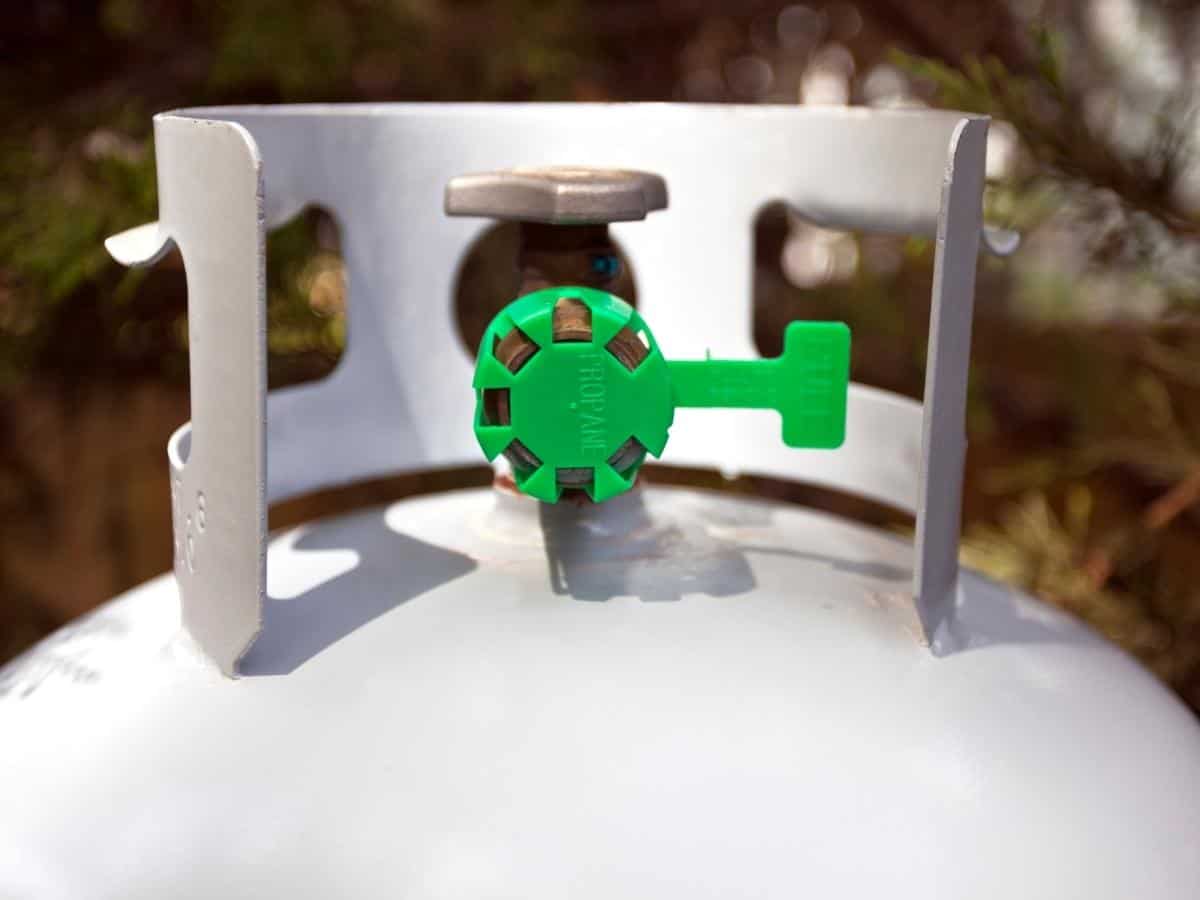
Size Regulator for a Propane Generator
The answer depends on the propane tank and how much power you need. As a rule of thumb, your regulator size must match your tank. If you are unsure which type of regulator you need, take your propane tank to the store.
Your dealer or manufacturer will help match up the correct regulator based on your tank’s type and size and the devices you want to run.
High or Low-pressure Propane Regulator for a Generator
Most people will only ever use one type of regulator: a low-pressure one. Low-pressure regulators are ideal for all outdoor grills, fire pits, and other outdoor cooking appliances.
You can use a high-pressure regulator if you have multiple appliances that run simultaneously and need a significant amount of fuel.
High-pressure Regulator for Propane Generators
Red propane regulators signify high-pressure modulation. Such a configuration often involves a second-stage regulator in a two-stage system.
However, high-pressure regulators can also function independently in high gas usage systems.
Low-pressure Propane Regulator for Generator
Have you ever felt like you are underutilizing your generator? When you finish your emergency backup power supply, does it seem like plenty of propane left in the tank, but you’re nervous about running out?
If that sounds familiar, a low-pressure propane regulator for the generator is just what you need. It’ll take the pressure from your generator down to a more manageable level (10.5 WC) for your cooking appliances.
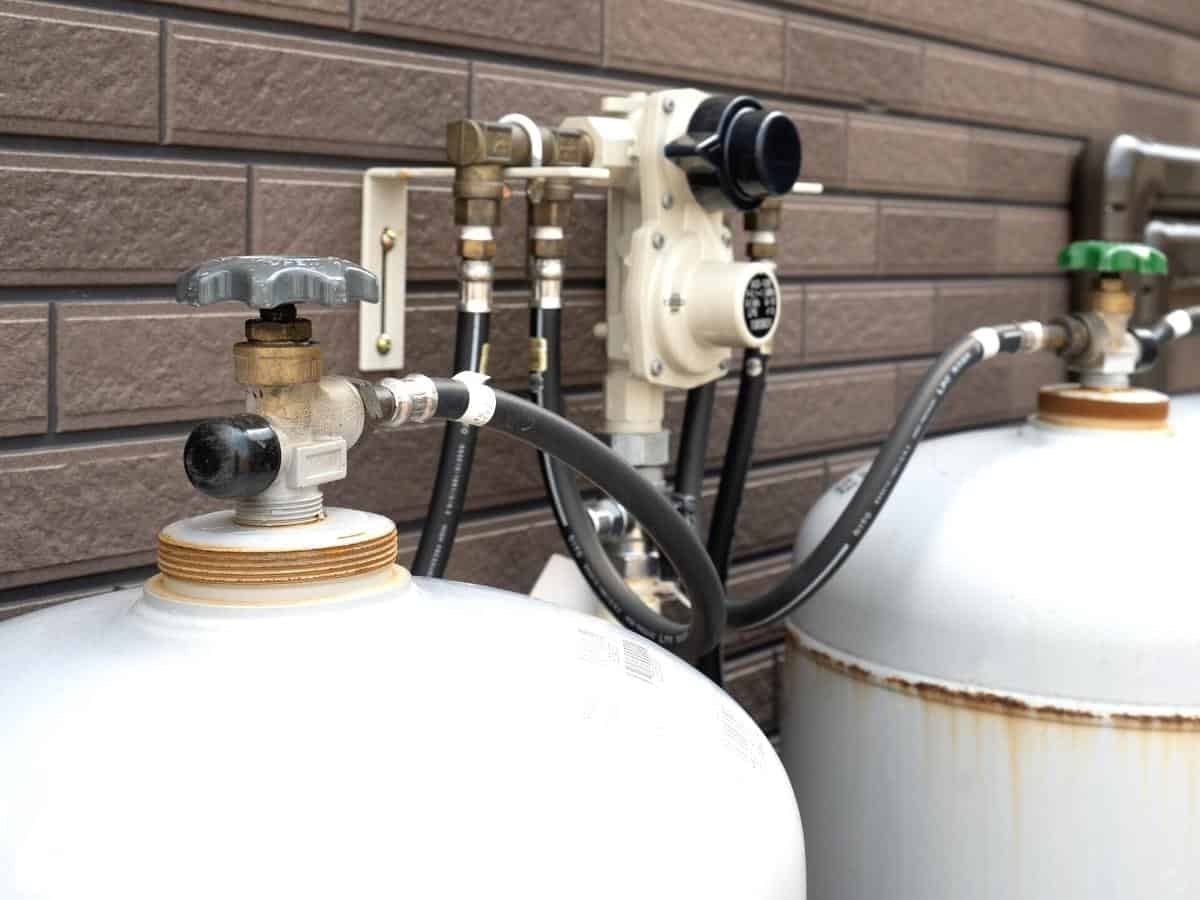
Propane Line Size For a Generator
The size of your propane line must be able to supply the required fuel to meet the generator’s fuel demand. Base the size on the BTU demand of the generator and the appliances that will run simultaneously on both sides of a transfer switch.
As far as natural gas is concerned, the diameter of your pipe should be at least ¾ inches. If you have a water column ranging from 20 to 130 feet, your gas line size can remain at 1.25 inches under these conditions.
If it exceeds 130 feet, you must upgrade to 1.5-inch gas lines or risk potentially compromising your generator’s lifeline.
Propane Regulator To Generator Distance
If you want to save a lot of space in your home, you can install your regulator on an outside wall of your home. You can also install it near a large appliance, like an outdoor pool heater. However, there is more to this decision than meets the eye.
The suggested locations make it easier to customize the lines and connectors to meet the needs of different devices. For example, you can connect devices with higher BTU needs to larger pipes to reduce the number of connections.
The first stage regulators are the first regulators the gas comes in contact with. Install first stage regulators in the gas tank.
Regulator For a 100-Pound Propane Tank
A 100-pound tank is large enough to supply several high-BTU appliances, such as a large water heater, a cooktop, and an oven. It may even be large enough to supply two or more households at once
We recommend a two-stage regulator for your sizable 100-pound propane tank, such as the Camco 59323. This regulator works well for appliances that need up to 160 000 BTU HR and has an inlet connector of 1/4″ NPT and an outlet connector of 3/8″ NPT.
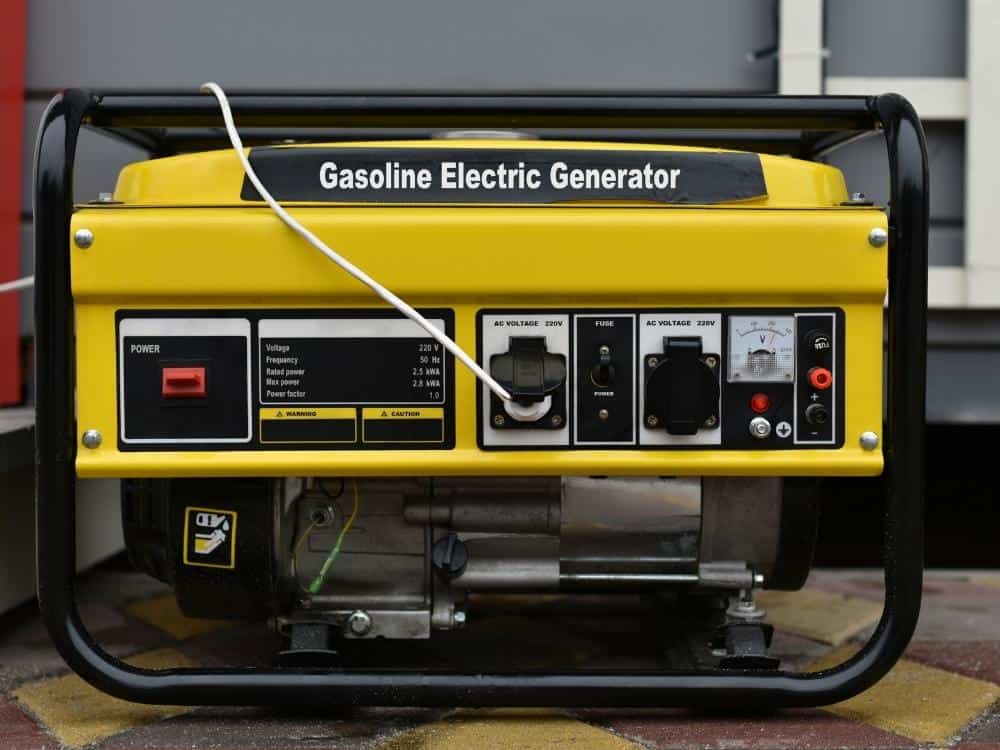
Regulator For Each Manufacturer
Duromax Generator Propane Regulator
The Duromax generator propane regulator is a replacement part for the XP12000EH, XP8500E, XP10000E, and XP13000E generators. It is also compatible with model numbers XP2000iS and XP4850EH.
The Duromax generator propane regulator is ideal for people who want to convert their generators from gasoline to liquid petroleum. It comes with an installation kit and a complete set of instructions for easy installation and use.
Gas Regulator for Generac 22kw Generator
You should look into a multi-stage regulator if you need to hook several appliances to one propane tank. You can adjust the pressure depending on the number of appliances connected at one time.
You may also want to go with a diaphragm-type regulator. Diaphragm regulators are more reliable than piston regulators because they will not freeze up during extreme weather conditions as piston regulators can.
Regulator for the Generac Generator
If you buy a Generac generator, you will probably want to buy a regulator. The regulators listed below are compatible with Generac generators.
- Sensus5
- Emerson Fisher
- Itron
Champion Dual Fuel Generator Propane Regulator
The Champion generator comes readily installed with a 2-stage regulator to help reduce the flow of propane gas to your appliances.
You will need a first-stage regulator at the end of a one-meter hose to connect the propane tank to the generator.
Sources:
- https://www.researchgate.net/figure/Block-Diagram-of-Propane-Pressure-Regulator_fig5_267680079
- https://sizer.maxitrol.com/EN/regsizprog.php
- https://www.zillerelectric.com/products/generac-055944-fuel-regulator-nat-gas-lp-vapor
- https://www.powerequipmentforum.com/threads/champion-7500-dual-fuel-lpg-regulator.23240/


